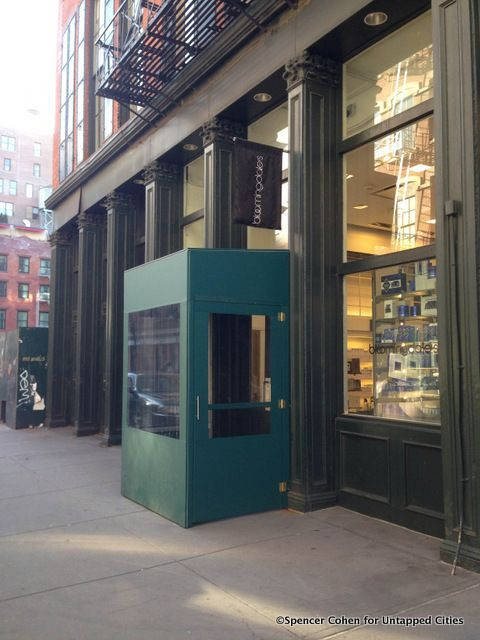Crosby Street, nestled in the trendy Soho neighborhood, presents a distinct character that sets it apart. While surrounded by fashionable boutiques and housed in revitalized industrial buildings characteristic of Soho, Crosby Street maintains a quaint and almost understated charm. For those seeking a taste of Soho’s artistic and industrial past, before the influx of high-end retail chains, Crosby Street offers a refreshing glimpse. Stretching only six blocks, it runs from Bleecker Street in the north down to Howard Street, just above Canal Street, in the south. Its name honors William Bedloe Crosby, a 19th-century millionaire and philanthropist who contributed significantly to the city.
A curious aspect of Crosby Street lies in its official landmark designations, which subtly divide the street. The western side has been historically recognized as part of the Soho Cast Iron Historic District since its inception, a defining feature of Soho’s architectural heritage. In contrast, the eastern portion only received this designation in 2010, as part of a district extension.
Walking along Crosby Street, the division isn’t immediately obvious, yet the street reveals its dual nature. The western side largely functions as service entrances for the grand stores lining Broadway, operating discreetly behind the scenes. Meanwhile, the eastern side, with its less concealed facades, is characterized by former factories and private residences. Interspersed throughout are occasional storefronts, punctuating the otherwise industrial landscape and offering unique retail experiences.
What distinguishes Crosby Street further is its resistance to the pervasive influence of major brands that have come to define much of Soho. The retail presence here leans towards smaller, independent boutiques. Notable examples include Saturdays Surf, a distinctive blend of surf shop and coffee bar, and Carson Street Clothiers, offering curated menswear. While a Starbucks does occupy a corner on Spring Street, Crosby Street largely avoids the dominance of retail giants like Bloomingdale’s (whose Crosby Street entrance serves as a subtle back access point) and Topshop on Broadway, preserving a more intimate and localized shopping atmosphere.
The historical narrative of Crosby Street includes a significant event: a major fire in 1876 that devastated a large section of the block. This fire occurred after a period of industrial growth in the mid-19th century, which saw factories erected following the initial construction of brick houses, as reported by The New York Times. The late 19th century also brought Crosby Street into the news for less favorable reasons, with reports of crime. An 1885 article from a California newspaper detailed a police raid on an opium den on Crosby Street, though it was found emptied due to prior warnings. Adding to this narrative, a disturbing incident involved a man named James Flood, later identified as McFarland, who committed a violent assault against his wife, Mary Flood, further marking the street’s complex history.
 Bloomingdale's discreet back entrance on Crosby Street, illustrating the street's mix of commercial and understated elements in Soho.
Bloomingdale's discreet back entrance on Crosby Street, illustrating the street's mix of commercial and understated elements in Soho.
Toward the southern end of Crosby Street, near Howard Street, lies Putnam Rolling Ladder Co., Inc., a business that exudes a timeless charm. Producing ladders for libraries and other settings, Putnam Rolling Ladder, established in 1905 by Samuel Putnam and now managed by the Monsees family, stands as a unique and somewhat anachronistic presence. Moving to the northern end of the street, you’ll find the Housing Works Bookstore, featured in guides to Manhattan’s top coffee shops for design enthusiasts. Operated by Housing Works, this bookstore and cafe is staffed entirely by volunteers and boasts an extensive collection of donated books, offering both literary treasures and a welcoming coffee shop experience.
Today, while Soho is known for its chic residents and status as a major tourist destination, Crosby Street provides a valuable link to the neighborhood’s original artistic and industrial roots. It remains a pocket of unique character within the ever-evolving landscape of downtown Manhattan.

